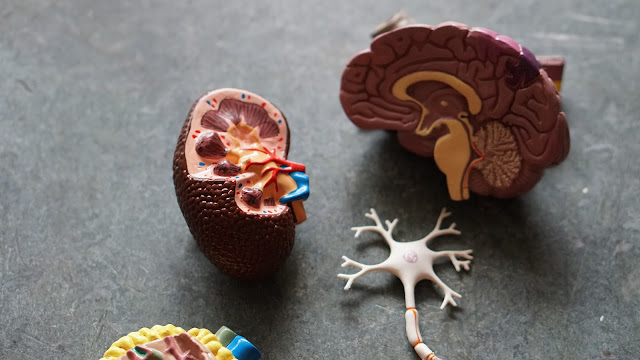The human body is a complex and intricate system, composed of numerous organs, tissues and networks of nerves. One such vital network is the vagus nerve, also known as the wandering nerve.
The vagus nerve plays a remarkable role in our overall wellbeing, influencing various bodily functions and maintaining a delicate balance between different systems.
So let's delve into the depths of the vagus nerve, unravelling its functions, pathways and the profound impact it has on our physical and mental health.
Anatomy and Structure of the Vagus Nerve
The vagus nerve is the longest cranial nerve in the body, extending from the brainstem to various organs throughout the torso. It consists of a bundle of nerve fibres that originate from the medulla oblongata, the lower part of the brainstem.
This intricate nerve network branches out extensively, forming connections with multiple organs, including the heart, lungs, stomach, liver and intestines.
Autonomic Nervous System and the Vagus Nerve
The vagus nerve is a fundamental component of the autonomic nervous system, which regulates essential bodily functions without conscious effort. It operates through two distinct branches: the parasympathetic and sympathetic nervous systems.
While the sympathetic system prepares the body for fight or flight responses, the parasympathetic system facilitates a state of rest and relaxation.
The vagus nerve predominantly belongs to the parasympathetic division, exerting a counterbalancing effect to maintain homeostasis.
Functions of the Vagus Nerve
1. Regulation of Heart Rate and Blood Pressure
The vagus nerve plays a pivotal role in controlling heart rate and blood pressure. It acts as a crucial regulator, helping to lower heart rate during periods of rest and maintaining stability during physical activity or stress.
2. Gastrointestinal Control
The vagus nerve contributes significantly to the regulation of digestion, absorption and elimination processes within the gastrointestinal tract. It modulates the release of digestive enzymes, controls the movement of food through the oesophagus, stomach, and intestines, and influences nutrient absorption.
3. Respiratory Influence
Through its connections with the lungs and bronchial muscles, the vagus nerve governs several aspects of respiration. It controls the rate and depth of breathing, facilitates bronchoconstriction and bronchodilation and aids in the clearance of mucus from the airways.
4. Regulation of Metabolism
The vagus nerve plays a role in modulating metabolic processes, including glucose regulation and appetite control. It communicates with the pancreas, liver and other metabolic organs, influencing insulin secretion, glycogen synthesis and glucose production.
5. Anti-Inflammatory Response
Recent research has highlighted the vagus nerve's involvement in dampening inflammation throughout the body. The nerve releases anti-inflammatory molecules, helping to regulate the immune response and reduce excessive inflammation.
Impact on Mental Health and Wellbeing
1. Stress and Anxiety Management
The vagus nerve acts as a vital link between the brain and various physiological stress responses. Its activation triggers the relaxation response, reducing stress hormones and promoting a sense of calm.
Techniques like deep breathing and meditation can stimulate the vagus nerve, offering effective stress management strategies.
2. Mood Regulation
Studies have indicated that vagus nerve stimulation can positively impact mood regulation and alleviate symptoms of depression. Therapeutic interventions such as vagus nerve stimulation (VNS) therapy have shown promise in treating treatment-resistant depression and bipolar disorder.
3. Cognitive Function and Memory
The vagus nerve has been found to play a role in cognitive function and memory formation. Research suggests that stimulating the vagus nerve can enhance memory consolidation and improve cognitive performance.
4. Gut-Brain Connection
The vagus nerve establishes a strong connection between the gut and the brain, known as the gut-brain axis. This bidirectional communication influences mood, behaviour and overall mental wellbeing.
Disruptions in vagal activity have been associated with gastrointestinal disorders such as irritable bowel syndrome (IBS) and inflammatory bowel disease (IBD).
5. Vagus Nerve Stimulation
VNS is a medical procedure that involves the use of electrical impulses to stimulate the vagus nerve. It has been approved by regulatory bodies for the treatment of epilepsy and depression, showing promising results in reducing seizure frequency and improving mood.
In recent years, VNS has also emerged as a potential therapeutic approach for other conditions including anxiety disorders, chronic pain, inflammation related disorders and even neurodegenerative diseases like Alzheimer's and Parkinson's. Ongoing research aims to explore the full potential of VNS in various medical fields.
Techniques to Stimulate the Vagus Nerve
Several non-invasive techniques can stimulate the vagus nerve, promoting its beneficial effects on physical and mental health. These include:
8. Laughter: Genuine laughter can activate the vagus nerve and promote its stimulation. Engage in activities that bring you joy, watch a comedy show or spend time with people who make you laugh.
The vagus nerve stands as a remarkable bridge between our body and mind, playing a crucial role in regulating various bodily functions and influencing our overall health. From its extensive connections throughout the body to its impact on mental wellbeing, the vagus nerve reveals itself as a key player in maintaining homeostasis and promoting optimal functioning.
By understanding its functions and exploring techniques to stimulate the vagus nerve, we unlock the potential for harnessing its healing power. Further research and advancements in vagus nerve stimulation hold promising prospects for improving medical treatments and enhancing our overall quality of life.
